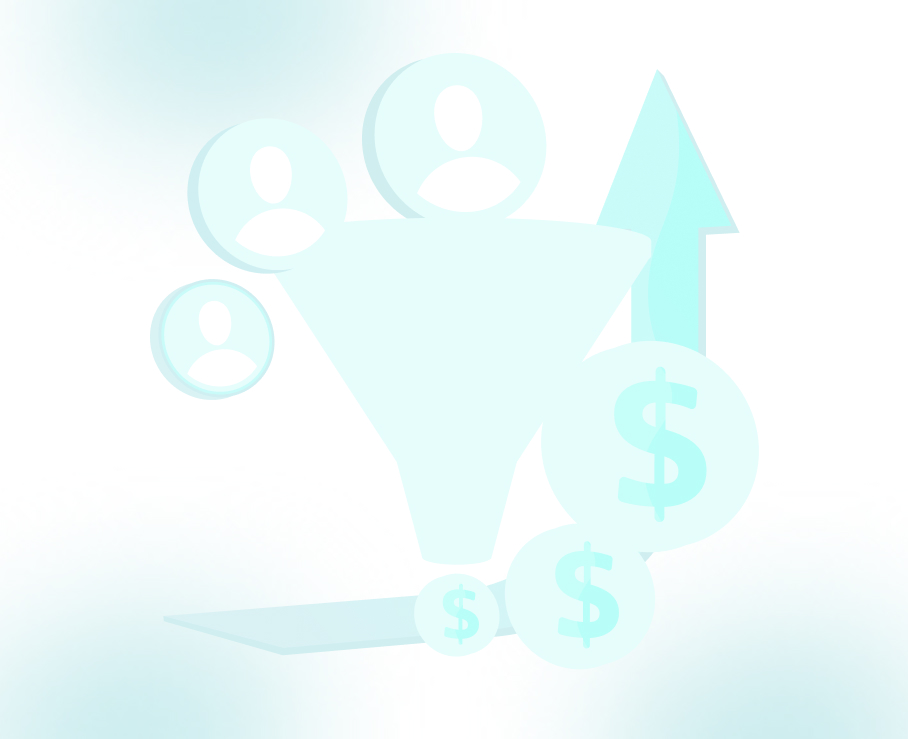
How to Boost Your Sales Pipeline Effectively

Are you making the most of your B2B sales pipeline? Success today is not just about generating leads; it is about nurturing the right leads at the right time.
Yet, according to LeanData’s 2024 report, only 13% of go-to-market teams believe their lead management strategy effectively drives conversions.
This reveals a major challenge for many businesses without a focused data-driven approach, sales pipelines often lose valuable opportunities, which slows growth and limits monthly recurring revenue.
In this article, we’ll explore targeted tactics to reignite your sales pipeline, improve lead qualification, and boost conversions. Let’s understand this in deeper detail first!
Understanding the B2B Sales Pipeline
A sales pipeline is a structured process that maps the buyer’s journey from initial contact to a closed deal.
For B2B companies, especially in industries like managed services, staffing, and tech, having a well-defined pipeline is crucial to forecasting revenue and driving predictable growth.
Key Stages of a Typical B2B Sales Pipeline
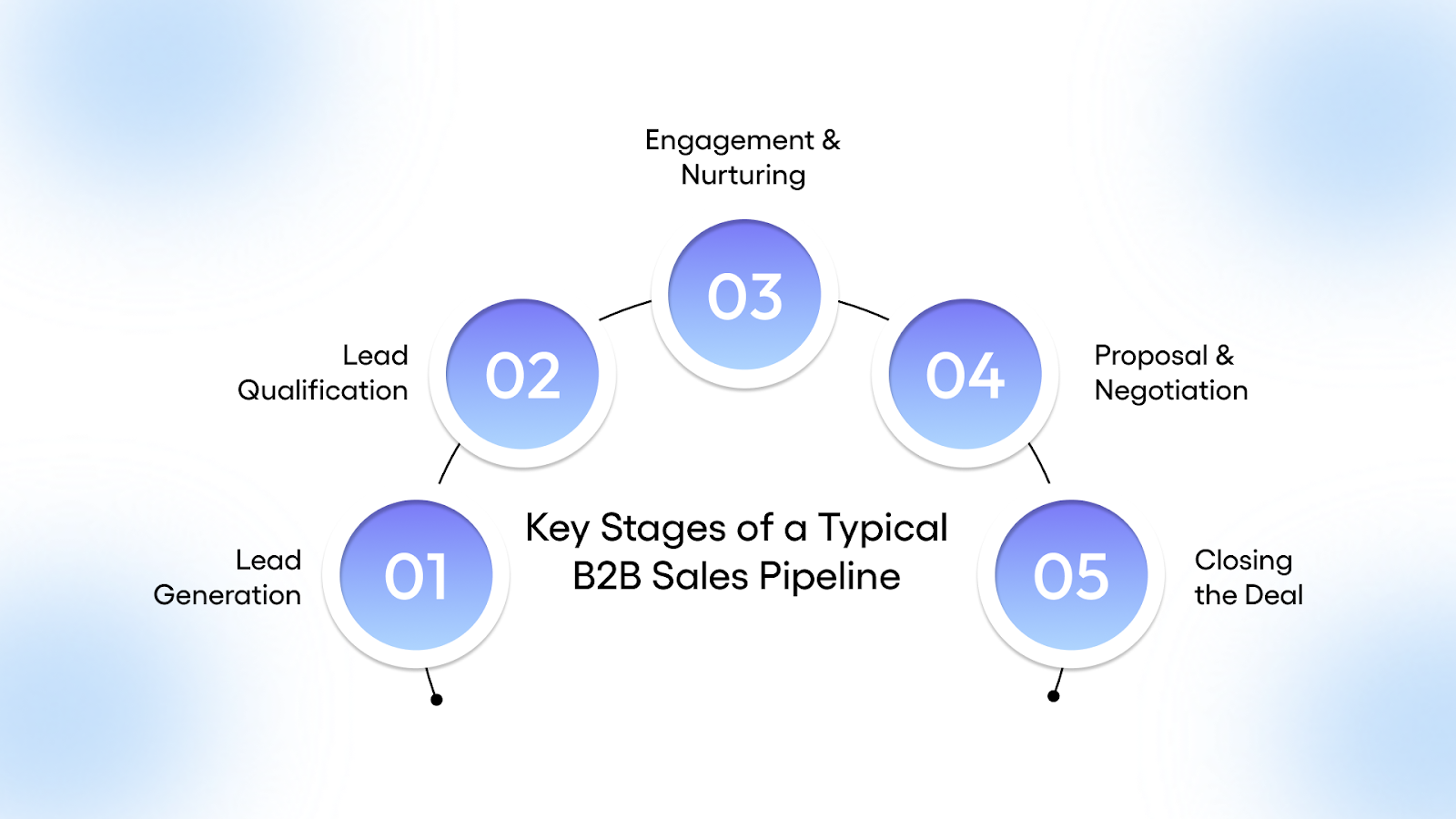
- Lead Generation: Identifying and attracting potential buyers through targeted outreach, especially email marketing and demand generation.
- Lead Qualification: Sales-qualified leads (SQLs) are crucial for evaluating whether a prospect fits your ideal customer profile (ICP) and is worth pursuing.
- Engagement & Nurturing: Using multi-touch campaigns to educate, build trust, and guide prospects closer to a decision.
- Proposal & Negotiation: Presenting tailored solutions and aligning with the buyer’s needs.
- Closing the Deal: Securing a commitment and converting the opportunity into revenue.
Why a Clear Pipeline Matters
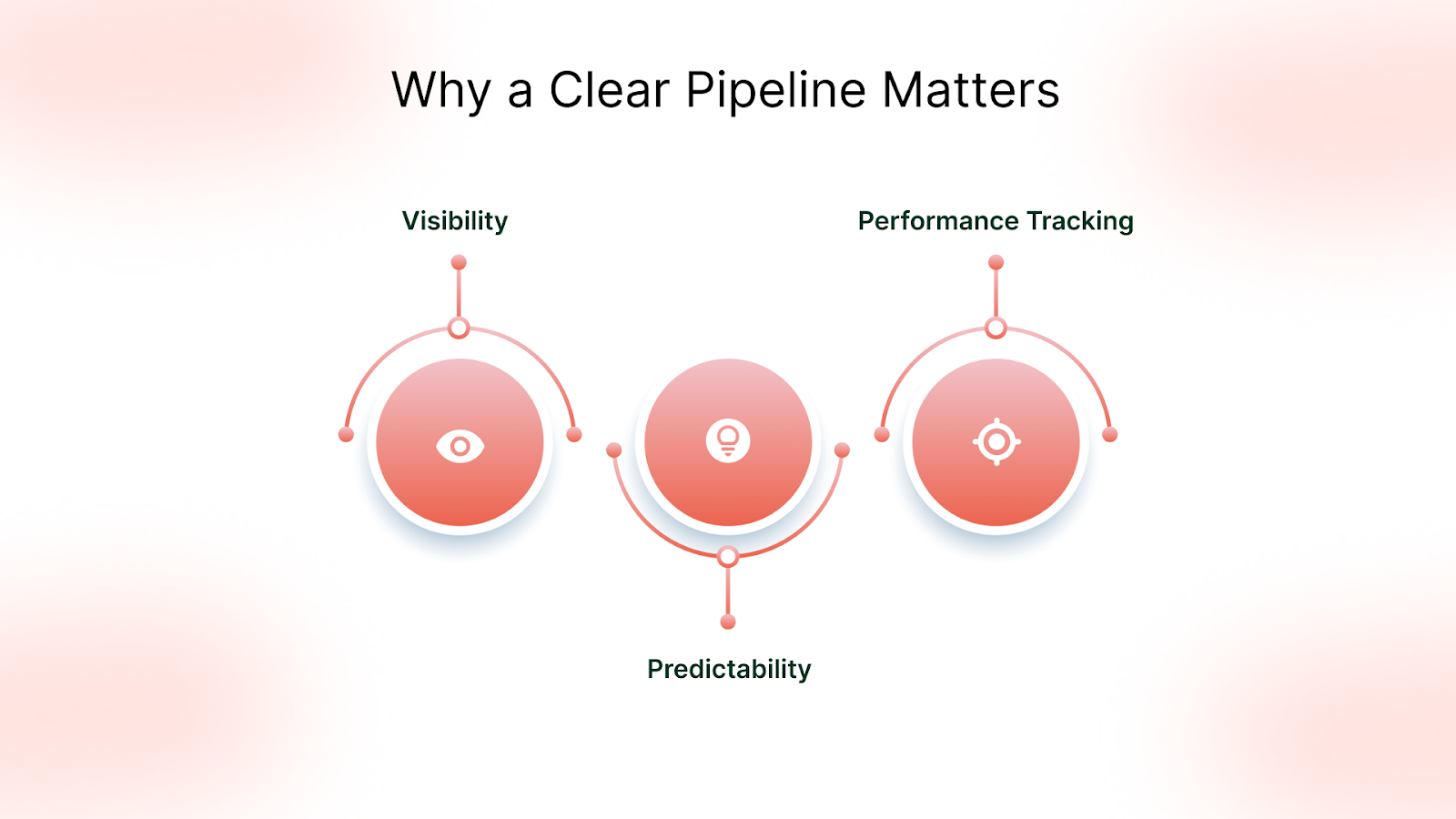
- Visibility: Helps sales teams prioritize efforts and manage time effectively.
- Predictability: Accurate forecasting depends on understanding where prospects are in the pipeline.
- Performance Tracking: Metrics like conversion rates, deal velocity, and pipeline value help refine your sales strategy.
To know more about its importance, read The Importance of a Sales Pipeline and Its Impact on Boosting Sales
A disorganized pipeline leads to missed opportunities and wasted resources. Conversely, a streamlined pipeline powered by qualified leads and strategic outreach, such as the targeted services TLM delivers, can significantly increase monthly recurring revenue and sales efficiency.
Read on to know the best strategies to boost your sales pipeline the right way!
Proven Strategies to Boost Your B2B Sales Pipeline Effectively
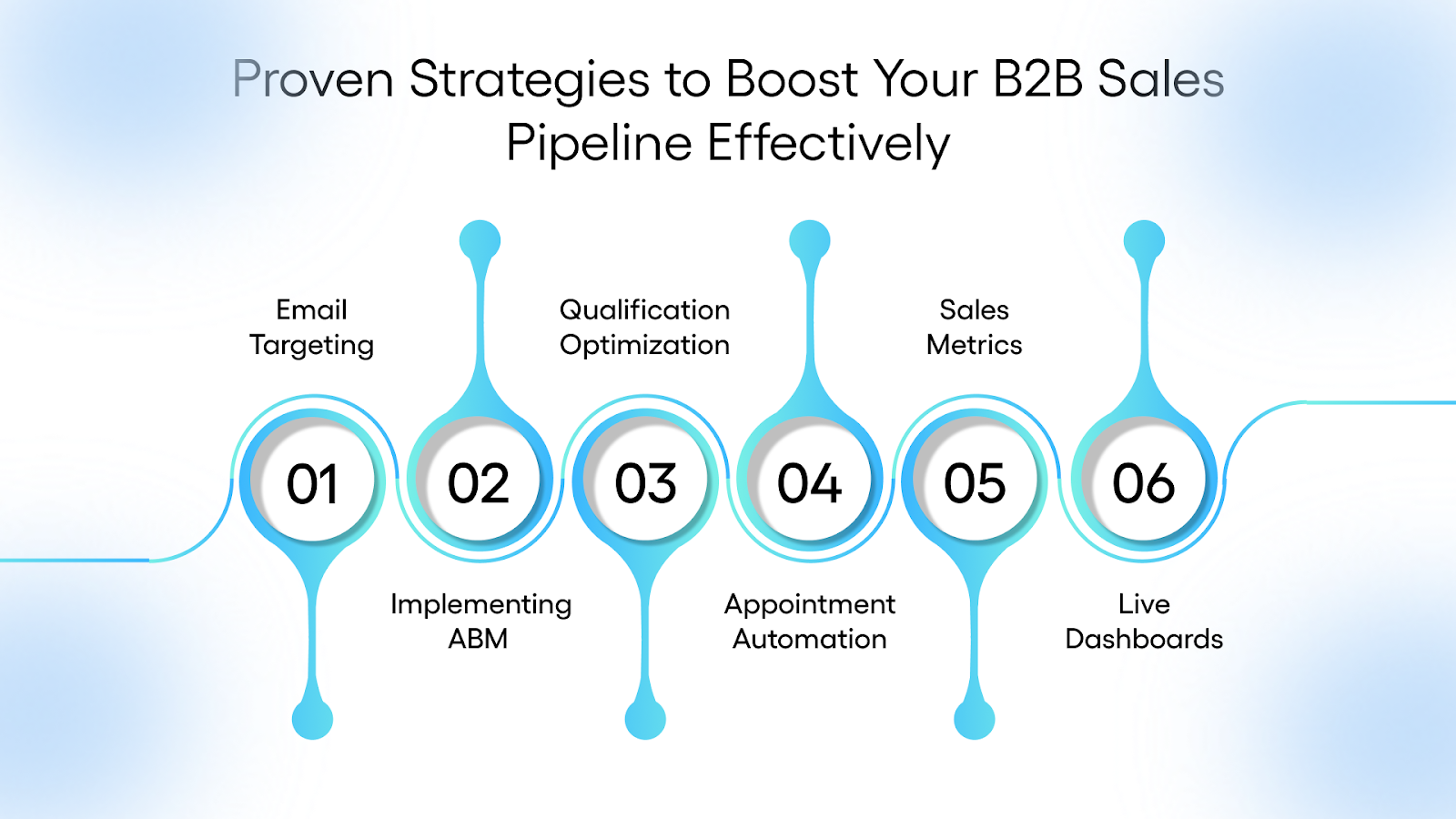
Effective sales pipelines rely on targeted strategies that improve lead quality, engagement, and conversion rates. Below are key tactics that drive measurable growth and increase monthly recurring revenue.
1. Leveraging Targeted Email Marketing
Email marketing remains a cornerstone of B2B lead generation and nurturing strategies.
Why Email Marketing is Essential for B2B Sales Pipelines
- 77% of B2B buyers prefer email for communication, making it highly effective for engagement.
- Email enables direct contact with key decision-makers.
- It nurtures leads cost-effectively throughout the sales process.
- Email campaigns offer measurable results to optimize performance.
- Allows personalized outreach at scale for better response rates.
Best Practices for Targeted Email Marketing
- Segmentation: Divide your email list based on industry, company size, or buyer persona to deliver more relevant and personalized content. For example, segmenting clients into startups, mid-market, and enterprise allows targeted messaging.
- Personalization: Use the recipient's name and tailor content to their needs and interests to increase engagement.
- Automation: Implement automated email sequences to engage leads consistently throughout the sales funnel.
- Performance Tracking: Monitor key metrics such as conversion rates to refine your strategy.
Refine your outreach for greater impact—explore our Ultimate Guide to Targeted Email Marketing.
Execution Tips
- Use dynamic content fields to enhance email relevance for each recipient.
- Test different subject lines and call-to-actions (CTAs) to improve engagement.
- Maintain consistent, value-driven messaging to nurture leads effectively.
At TLM, our email marketing services focus on highly personalized and segmented campaigns designed to maximize engagement and deliver quality sales-qualified leads. By adopting these best practices, businesses can build a stronger, more effective sales pipeline.
2. Implementing Account-Based Marketing (ABM)
As B2B sales cycles become increasingly complex and competitive, Account-Based Marketing (ABM) has become a vital strategy to accelerate deal closures by focusing on high-value accounts with personalized outreach.
Why ABM Matters
- Personalized Engagement: ABM delivers customized messaging that resonates deeply with key accounts, boosting relevance and response rates.
- Sales and Marketing Alignment: Coordinated efforts between sales and marketing ensure consistent communication and improved conversion outcomes.
- Efficient Resource Allocation: Prioritizing high-potential accounts focuses resources where they generate the most impact, maximizing ROI.
Best Practices for ABM
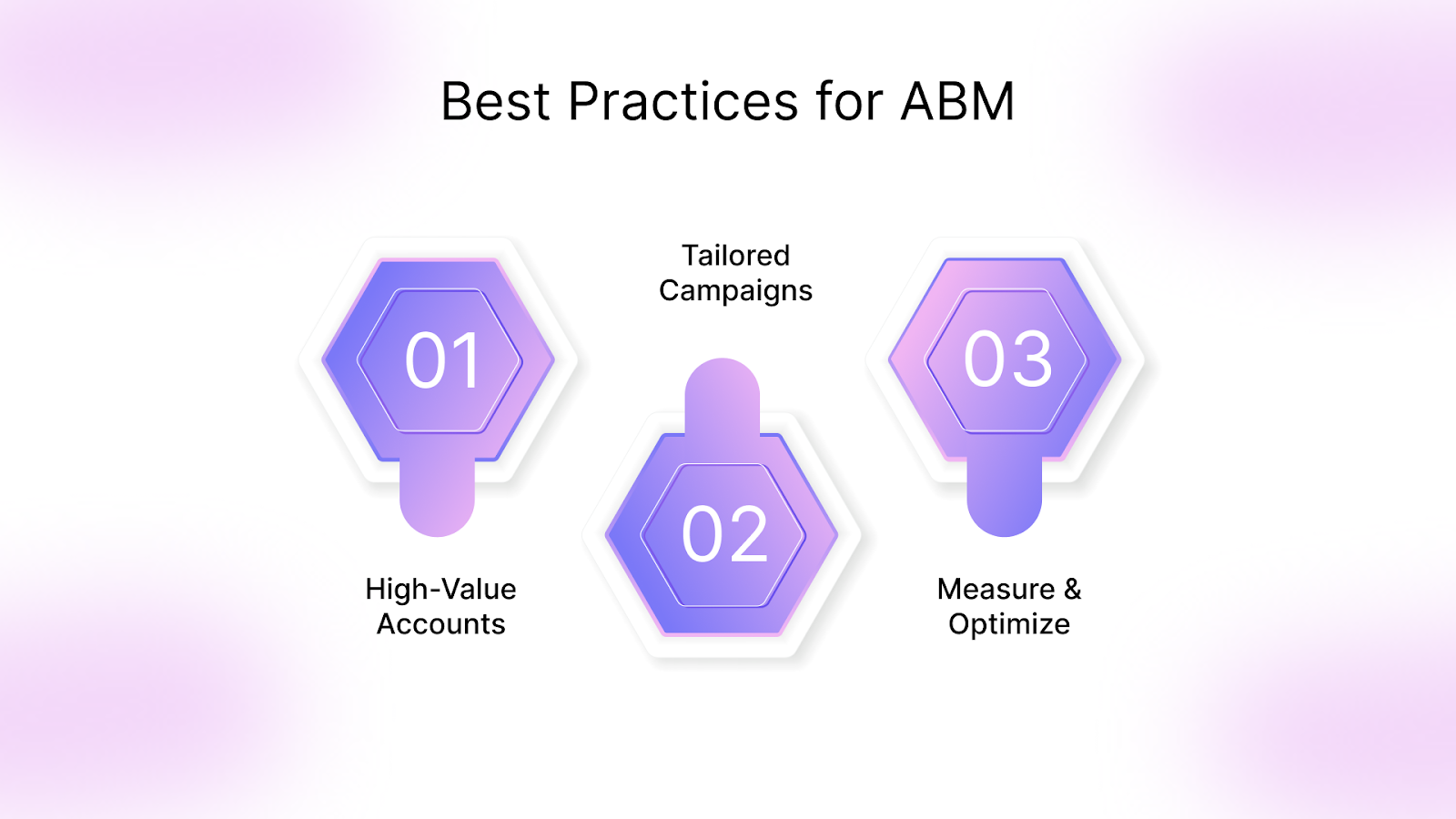
- Identify High-Value Accounts: Leverage data-driven insights to pinpoint accounts with the greatest revenue potential, aligning with your ideal customer profile.
- Develop Tailored Campaigns: Craft messaging that directly addresses the unique challenges and needs of each target account.
- Measure and Optimize: Monitor engagement and results regularly, refining campaigns to enhance effectiveness and drive stronger results.
By adopting ABM, companies can build stronger relationships with key prospects, leading to larger deals and faster sales cycles. TLM’s Account-Based Marketing empowers clients to execute precise, relevant, and results-driven outreach to high-value accounts.
3. Optimizing Lead Qualification Processes
Efficient lead qualification is crucial for maintaining a healthy B2B sales pipeline. Without a focused qualification framework, sales teams often spend time on unfit prospects which affects both conversion and revenue growth.
Importance of Lead Qualification
- Prioritize Sales Efforts: Identifying high-quality leads ensures that sales teams focus on prospects with the highest conversion potential.
- Improve Conversion Rates: Qualified leads are more likely to progress through the sales funnel, increasing the likelihood of closing deals.
- Enhance Customer Experience: Engaging with the right audience at the right stage creates more relevant and valuable conversations.
Strategies for Effective Lead Qualification
- Define Ideal Customer Profiles (ICPs): Establish clear criteria for what constitutes a qualified lead based on factors like industry, company size, and budget. TLM's lead generation process focuses on identifying and nurturing prospects that match your exact ICP, ensuring higher conversion rates and ROI.
- Implement Lead Scoring: To prioritize follow-ups, assign scores to leads based on their behavior and engagement levels. If they visit the pricing page and engage with an email sequence, they could score 10/10.
- Utilize Marketing Automation Tools: Leverage technology to track lead interactions and automate the qualification process.
- Regularly Review and Update Criteria: Continuously assess and refine qualification parameters to align with evolving business goals.
Optimizing lead qualification processes ensures that sales teams invest their time and resources in prospects most likely to convert, thereby enhancing overall sales efficiency.
Struggling to Filter the Right Leads? Let’s Fix That.
4. Streamlining Appointment Scheduling
Efficient appointment scheduling plays a key role in turning qualified leads into revenue. Without a structured system, delays in scheduling can lead to lost opportunities and reduced conversion rates.
Benefits of Streamlined Appointment Scheduling
- Save Time: Reducing unnecessary follow-ups helps your sales team focus on meaningful conversations.
- Enhanced Customer Experience: Offering clear and flexible scheduling options increases convenience and builds trust.
- Higher Conversion Rates: Timely scheduling ensures leads remain engaged, helping move them faster through the sales funnel.
Best Practices
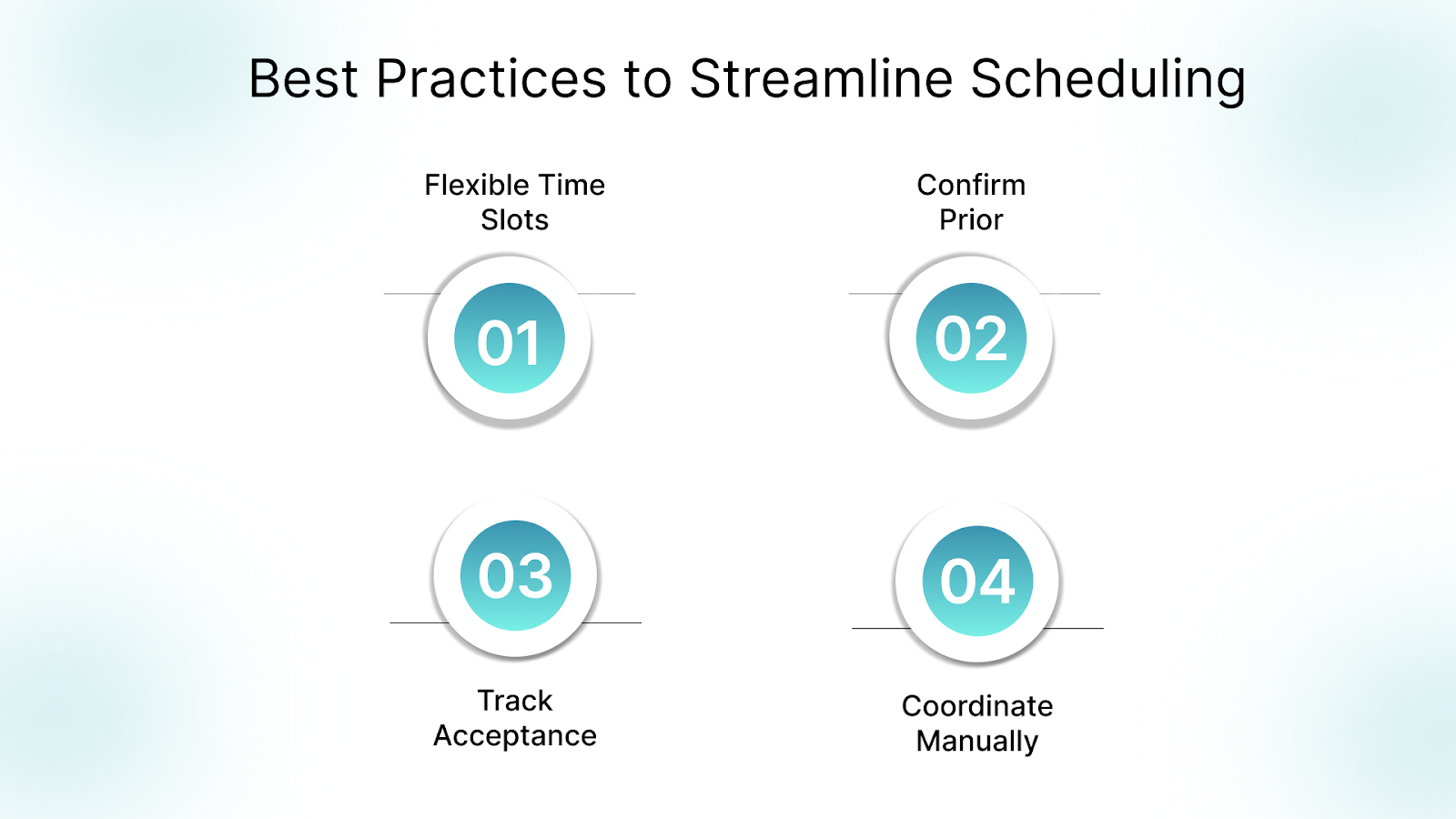
- Provide Flexible Time Options: Share multiple time slots based on the prospect’s time zone and availability to improve meeting alignment.
- Confirm Before Scheduling: Always confirm the proposed time with all stakeholders before sending the calendar invite.
- Track Invite Acceptance: After sending the invite, follow up to ensure it’s accepted. This helps maintain clarity and reduces last-minute rescheduling.
- Use Manual Coordination Over Automation: Rather than relying solely on automated tools, TLM takes a hands-on approach to scheduling, ensuring each meeting is well-coordinated and personally confirmed.
By optimizing appointment scheduling, businesses can enhance their sales efficiency and improve the overall customer journey.
Recommend: Top Tips for Effective Appointment Setting in 2025
5. Tracking Key Sales Pipeline Metrics
Monitoring the right sales pipeline metrics is essential for understanding performance and making informed decisions. Focusing on outcome-driven metrics helps businesses uncover what’s truly working in their sales efforts.
Essential Metrics to Monitor
- Pipeline Velocity: Measures the speed at which deals move through the pipeline, helping identify bottlenecks.
- Conversion Rates: Tracks the percentage of leads that progress to each stage, indicating the effectiveness of sales strategies.
- Average Deal Size: Provides insights into revenue potential and helps forecast.
- Lead Response Time: Faster responses can significantly increase the likelihood of conversion.
Strategies for Effective Tracking
- Regularly Review Metrics: Consistent analysis helps identify trends and areas for improvement.
- Align Sales and Marketing: Ensuring both teams are on the same page enhances the quality of leads and the efficiency of the pipeline.
- Utilize Analytics Tools: Implementing robust analytics platforms provides real-time data and deeper insights.
Learn how to build a lead generation strategy that fills your pipeline with quality prospects in our guide, Creating a Quality Lead Generation Process for a Robust Sales Pipeline.
6. Leveraging Real-Time Dashboards
Real-time dashboards provide sales teams with instant visibility into key performance metrics, enabling faster and smarter decision-making
Benefits of Real-Time Dashboards
- Instant Visibility: Consolidate essential sales data for a clear and comprehensive view of pipeline progress and outcomes.
- Informed Decisions: Access to up-to-date information allows quick adjustments to campaigns and outreach strategies.
- Improved Collaboration: Centralized dashboards promote alignment between sales and marketing teams, enhancing overall efficiency.
Best Practices
- Integrate Key Metrics: Focus on KPIs like pipeline status, conversion rates, and monthly recurring revenue to measure success.
- Customize Views: Tailor dashboard views to the specific needs of sales reps, managers, and campaign teams.
- Regular Updates: Ensure dashboards are regularly updated to reflect the latest campaign performance and lead activity.
Adopting real-time dashboards helps maintain a data-driven sales process, improving pipeline management and accelerating revenue growth.
Also Read: Understanding the Importance of Data Freshness in Generating Quality Leads.
As we’ve explored individual strategies, it’s clear that real growth happens when everything works together.
Here’s how TLM ties it all into one powerful pipeline solution.
Integrating TLM’s Services for Maximum Impact
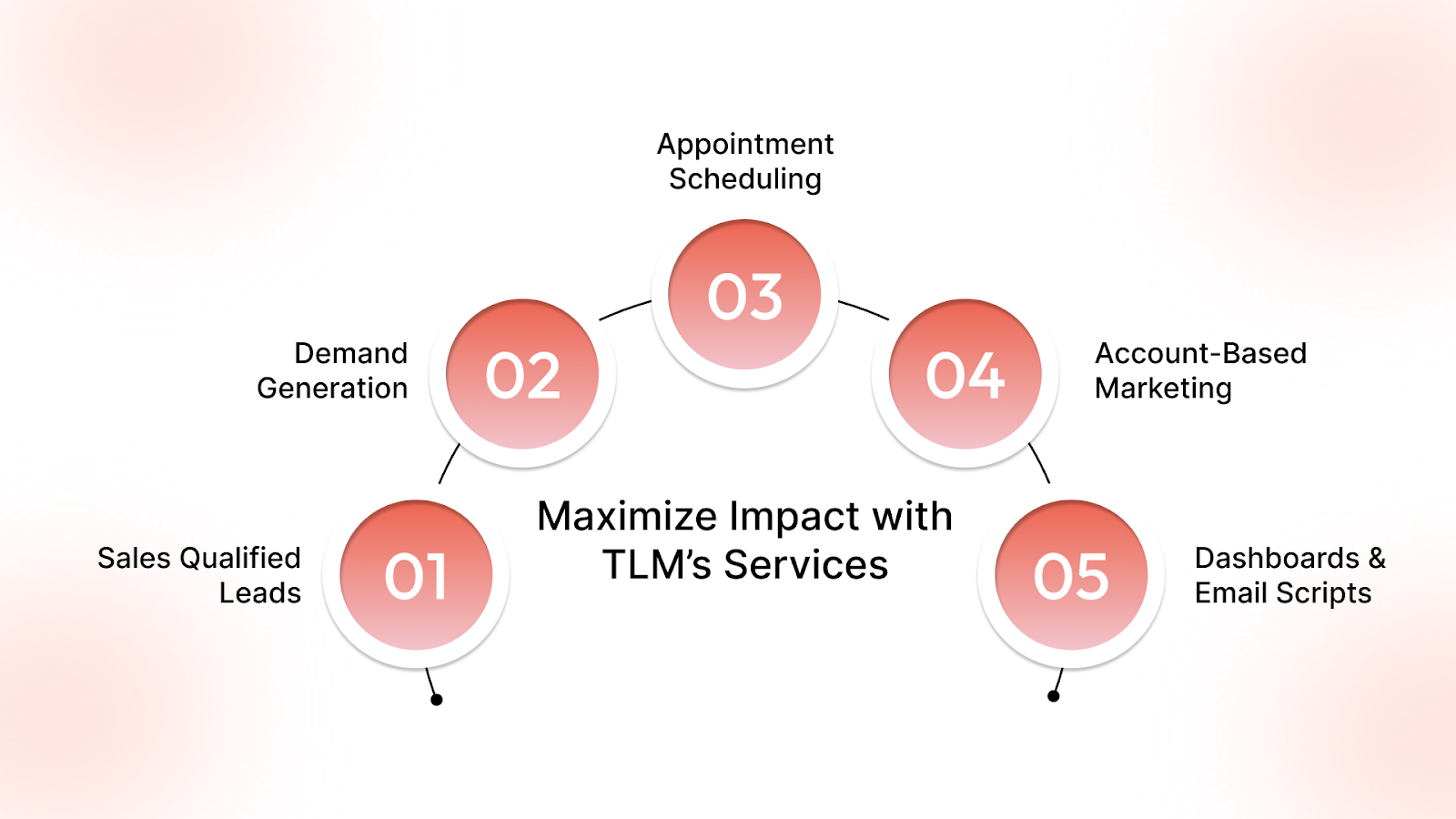
TLM offers a comprehensive suite of services designed to enhance every stage of the B2B sales pipeline. You can achieve scalable growth and improved ROI by leveraging their expertise in sales qualified leads (SQL), appointment scheduling, demand generation, and account-based marketing (ABM).
- Sales Qualified Leads (SQL): Targeted campaigns deliver high-intent leads based on client-defined criteria. This means fewer dead ends and more conversions.
- Demand Generation: Through strategic email marketing, TLM consistently keeps your brand in front of the right buyers.
- Appointment Scheduling: No more missed connections. TLM sets meetings directly with decision-makers, helping sales teams close faster.
- Account-Based Marketing (ABM): ABM lets you go deep with high-value targets. TLM builds campaigns tailored to specific accounts for better ROI.
- Dashboards & Email Scripts: Track performance in real time and use proven, customizable scripts to keep communication sharp and consistent.
Summing Up
A strong B2B sales pipeline is built on strategy, consistency, and meaningful engagement. By optimizing every stage from lead targeting to qualification and conversion, you set the foundation for predictable growth.
TLM (The Lead Market) helps B2B companies like MSPs, staffing firms, and tech providers build high-performing pipelines using our core services such as Sales Qualified Leads (SQL), Account-Based Marketing (ABM), appointment scheduling, and real-time dashboards.
When these strategies align, you get a high-converting pipeline that fuels monthly recurring revenue (MRR) and long-term business success.
Still wondering how these strategies apply to your business?
FAQs
1. How can I shorten my B2B sales cycle?
Streamlining your lead qualification process, leveraging targeted email marketing, and implementing appointment scheduling can significantly reduce your sales cycle by focusing efforts on high-quality leads and enhancing engagement.
2. How do I measure the success of my email marketing campaigns?
Key performance indicators (KPIs) such as open rates, click-through rates, conversion rates, and ROI are essential metrics to measure the effectiveness of your email marketing campaigns.
3. How can segmentation enhance my sales pipeline?
Segmentation allows you to deliver personalized content to different buyer personas, improving engagement and conversion rates by addressing specific pain points and needs at each stage of the pipeline.
4. What are the benefits of integrating lead scoring in the sales pipeline?
Lead scoring helps prioritize high-quality leads based on their behavior, engagement, and fit with your ideal customer profile, ensuring sales teams focus on prospects most likely to convert.
Q: Can account-based marketing (ABM) work for small businesses?
A: Yes, ABM can be highly effective for small businesses. By targeting a select number of high-value accounts with personalized messaging, small businesses can increase their chances of converting them into loyal customers.





